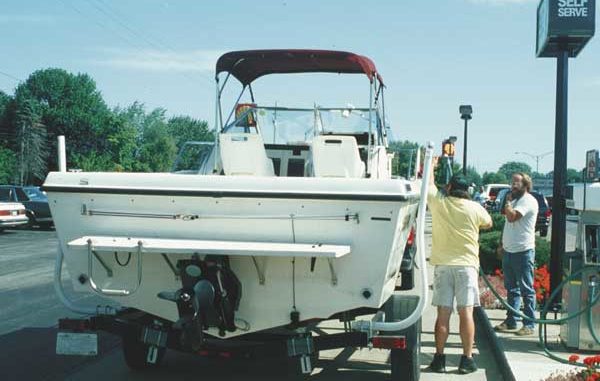
Louisiana has for years been sorely under-represented at the Bassmasters Classic, but that all changed this season. Four Louisiana anglers have made it to the big show.
The peak of the summer vacation season also sees a peak in gasoline use, and with the spike in prices at the pumps this summer, it pays more than ever before to know how to squeeze every mile out of a gallon of fuel — both on the water and on the way to and from the launch ramp.
A guy who makes his living towing and selling trailers, Rick Hereen of Shoreland’r has learned through first-hand experience how to maximize the mileage he gets when towing a trailered boat. In addition to adapting his driving habits and keeping the tow vehicle in top-towing shape, he also tweaks his boat and trailer to make the entire rig as fuel efficient as possible.
Here are seven fuel-saving, trailer-tweaking tips Hereen has gleaned from his years of over-the road, boat-towing experience:
• No. 1: Check tire pressure on the boat trailer and the tow vehicle.
Low tire pressure can drag both the vehicle and trailer, reducing fuel mileage. Low tire pressure can also lead to heat-caused tire failures. Refer to your trailer’s owner’s manual to learn the recommended tire pressure rather than using that posted on the tire itself, which is usually a maximum pressure rating and may not represent the most fuel efficient for that tire or that particular rig.
• No. 2: Maintain the proper tongue weight.
The boat trailer’s tongue weight should be between 5 to 7 percent of the total tow package, which should include the weight of the boat, all loaded gear and the trailer weight. This helps the trailer tow properly by reducing swaying or “fishtailing,” which can drastically reduce the rig’s miles per gallon.
• No. 3: Adjust your trailer to fit the boat.
Make sure the boat is level on the trailer and the trailer/boat is level when hooked to the vehicle. For adjusting the trailer for the boat it cradles, V-frame trailers allow for the lowest adjustment of the boat into the trailer and at the same time enable easy loading and unloading of the boat without any damage to the trailer or boat. Proper boat and trailer adjustment also reduces wind resistance.
• No. 4: Match the vehicle’s tow rating to trailer weight.
When towing, make sure the tow vehicle is capable of towing the boat and trailer package by checking the vehicle’s tow rating in the owner’s manual. Using a 2,000-pound tow package to tow a 3,000-pound boat and trailer not only will reduce fuel mileage but is unsafe to boot.
• No. 5: Use a boat cover.
To further reduce wind resistance, invest in a boat cover made for use while the boat is being towed. These snug-fitting tops will streamline and reduce the wind drag when towing the boat down the highway. Local marine dealers can be helpful in locating and fitting the right cover for your particular boat, which also protects the boat from the elements.
• No. 6: Check trailer bearings for proper lubrication.
Most trailers come with bearing protectors to keep the hubs properly lubed. Even these need to be checked regularly to make sure they are full of grease.
Most bearing protectors can be tested by simply pressing the spring-loaded piston. If the hub has adequate grease, it will rock back and forth slightly, but it will not fully compress.
Visually check standard bearings for adequate grease and re-pack as needed. Refer to the trailer owner’s manual for specific instructions.
• No. 7: Watch your speed.
When towing, accelerate slowly and steadily from complete stops. Maintain constant speeds — if the speed limit is 55 mph, maintain this speed.
In interstate driving where the posted speed limit is 65 to 75 mph, Heeren recommends driving 5 mph slower than the posted speed limit to get the most out of every precious gallon of gas.


